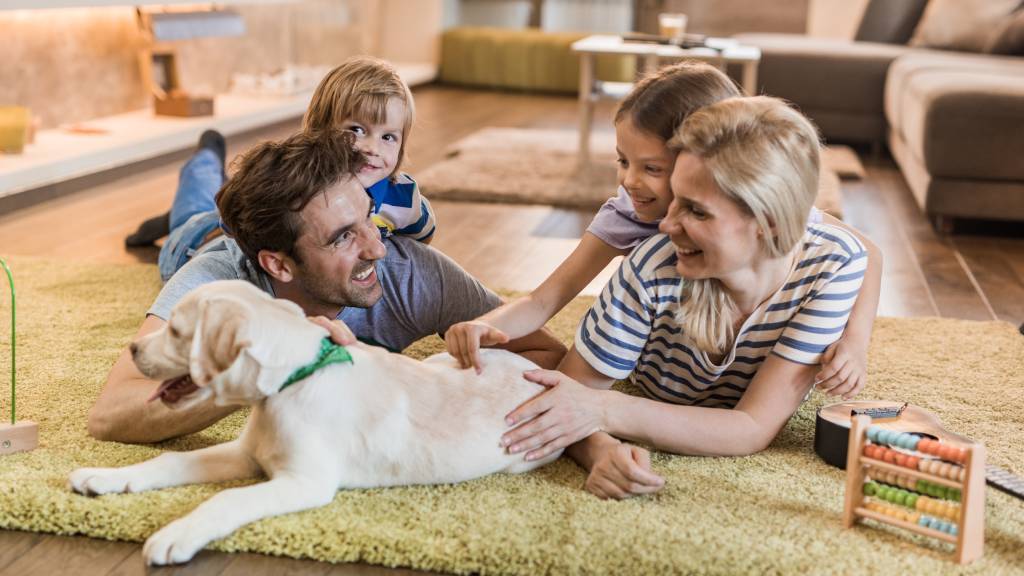Introducing a Kitten, Puppy or Adopted Dog to the Family Home

A new pet is an exciting addition to a family or household. The first few weeks for a kitten, puppy or an older adopted animal is the most critical time to settling a pet into their new surroundings. It’s important to set ground rules and establish a routine to help the animal settle in and for you to get used to the level of care and attention required from you. Here are some tips to help you and your new pet settle in and bond.
A new puppy
A new pup is a loveable bundle of joy, but the first few weeks are crucial to the animal’s development and future wellbeing as an adult. When you bring the puppy home, it’s important to introduce a routine from day one. Establish ground rules of where the dog will sleep; where and when it will be fed; what furniture it is not allowed on and what time of day will it be taken for a walk. Creating a routine that you stick to everyday will help your pet to be relaxed, happy, and will assist the pup to grow into an obedient, well behaved dog.
A young kitten
Kittens are incredibly cute when they are little. However it’s important not to bring a kitten home when it is too young, with the best age being 10-12 weeks to take a kitten from the mother cat. This gives the kitten enough time to spend with their mother and siblings, and to learn what behaviour is acceptable; how to use a kitty litter tray; and how to interact with humans and other cats. When you first introduce your kitten to family members, take it slow, and only let one person at a time meet the kitten in the first few days. Allow the kitten some time to get to know their bed and litter tray in a contained room, before the whole family handles the kitten.
Settling an older or adopted dog
An adopted dog will most likely be full grown and have some established behaviours, but it is possible to integrate the new family member to your home and routine. In the first few days they may be anxious, excited, bark more frequently then they usually do and drink excessive water and/or even have some diarrhoea. It’s important to make your pet feel relaxed and comfortable in their new surroundings, so take the time and let the animal have a period of adjustment. Show him where his food, water bowls and bed are, and take him outside regularly to relieve him and get into a habit of going outside. It can be best to keep the dog on a lead and spend as much time as possible with him in the first few days.
Introducing other pets to a new dog
If you have another pet that you are introducing your new pet to, let them get to know each other slowly and easily. Arrange for animals to meet at first on neutral ground such as the backyard or in a park and stay with the two animals at all times within the first few days, gradually increasing time with each other. Be firm with your senior animal and say “No” if they show signs of aggression, but reward and encourage positive behaviour such as sniffing, licking and wagging tails.
House training a cat
Cats instinctively bury their waste, and a new kitten is likely to have been shown how to use a litter tray by its mother. To encourage them to use the litter box, place them in the tray after they have woken up from a nap or have just finished eating. If they don’t start to scratch at the litter on their own, pick up their paw and make digging motions for them to simulate. Praise your kitten when they use the box to encourage them to use it every time until they do.
We hope these tips are useful to settling your new friend into their home. It can be incredibly scary and daunting for a pet to be taken away from their mother or shelter home to a new strange place, so remember to be as patient as possible. If you are looking for a new dog, check out the Top 10 most owned dog breeds in Australia, where you may find the perfect dog for you.
3 Sept 2013